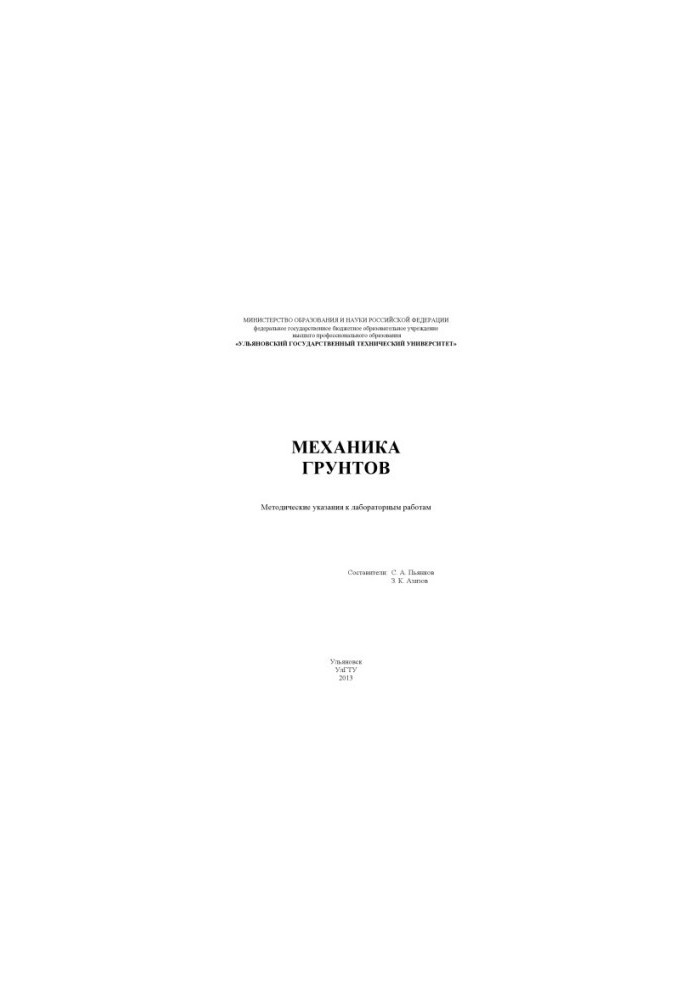Soil Mechanics: Methodical Instructions for Laboratory Work
 Instant download
Instant download
after payment (24/7)
 Wide range of formats
Wide range of formats
(for all gadgets)
 Full book
Full book
(including for Apple and Android)
The book "Mechanics of soils: methodical instructions for laboratory work" is an indispensable resource for students, graduate students and specialists in the field of geotechnics and construction mechanics . Compiled by a team of authors, it is a carefully developed manual that not only illuminates the theoretical foundations of soil mechanics, but also offers practical recommendations for performing laboratory tests. From the first pages, the reader plunges into the world of complex interactions between soil and building structures. The book covers a wide range of topics, including the physical and mechanical properties of soils, their behavior under load and test methods, making it relevant for both beginners and experienced professionals. Each chapter is written with clarity and accessibility, making it easy to learn even the most complex concepts. This book will be especially useful for students of construction and engineering specialties, as well as practicing engineers who seek to deepen their knowledge in the field of geotechnics. If you study at the Faculty of Civil Engineering or Architecture, then this manual will become your reliable companion in the study of soil mechanics. It will also be of interest to those working in the field of design and construction, where understanding the properties of soils is critical to ensuring the safety and durability of structures. One of the key topics raised in the book is the importance of laboratory studies to assess soil properties. The authors describe in detail the methods used to determine characteristics such as strength, compressibility and water permeability of soils. This knowledge is necessary for the correct design of foundations and other structures, which makes the book especially relevant in light of modern building requirements. The style of the authors is distinguished by scientific rigor, but at the same time they are able to convey information in an accessible and understandable form. This makes the book not only a tutorial, but also a fascinating reading for anyone interested in soil mechanics. The team of authors includes experienced teachers and practitioners, which ensures the high quality of the material and its relevance. The book Soil Mechanics: Methodical Guidelines for Laboratory Work may also be of interest to researchers working in related fields, such as ecology, geology, and hydrogeology. Understanding soil mechanics can have a significant impact on projects related to environmental protection and sustainable development, making it useful for a wide audience. If you are looking for literature that will help you better understand the mechanical properties of soils and their impact on construction, then this guide will be an excellent choice. It will not only enrich your knowledge, but also prepare you for the practical challenges you may face in your professional life. In conclusion, Soil Mechanics: Methodical Guidelines for Laboratory Work is not just a book, but a whole world of knowledge that will open before you. It will be your reliable assistant in the study of soil mechanics and will help you successfully cope with any tasks related to this important area of science and practice. Do not miss the opportunity to take a step towards new knowledge and professional growth!
LF/397488032/R
Data sheet
- Name of the Author
- Collective of authors
- Language
- Russian

























